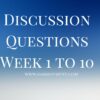Description
NURS 6051 Week 2 Quiz Patho with Answers
- The final stage of gout, characterized by crystalline deposits in cartilage, synovial membranes, and soft tissue, is called:
- A 70-year-old female presents with a hip fracture. She is diagnosed with osteoporosis. One factor that most likely contributed to her condition is:
- When trying to distinguish between an infectious disease and noninfectious disease, what is the hallmark symptom for most infectious diseases?
- The incidence of fractures of the pelvis is highest in:
- A 4-month-old male is brought to his primary care provider for severe itching and skin lesions. He is diagnosed with atopic dermatitis. Which of the following would be elevated in this patient?
- A 40-year-old female is diagnosed with SLE. Which of the following findings would be considered a symptom of this disease?
- A 3-year-old male develops tinea capitis after playing with the family dog. This infection is caused by a:
- Which cells are involved in initiating immune responses in the skin?
- Copy of A 5-year-old female was diagnosed with seropositive juvenile rheumatoid arthritis (RA). The treatment option for this disease is termed:
- When bacterial pathogens enter a patient’s body, they can defend themselves from an immune response by:
- A 5-year-old female takes a hike through the woods during a school field trip. Upon returning home, she hugs her father, and he later develops poison ivy. Which of the following immune reactions is he experiencing?
- A 4-month-old female develops white spots and shallow ulcers in her mouth. Her pediatrician diagnoses her with thrush. This condition is caused by:
- A 46-year-old male presents with severe pain, redness, and tenderness in the right big toe. He was diagnosed with gouty arthritis. He is at risk for developing:
- A 5-year-old female was diagnosed with seropositive juvenile rheumatoid arthritis (RA). The treatment option for this disease is termed:
- A 50-year-old male recently underwent a liver transplant and is taking immunosuppressive drugs. He now has painful vesicular eruptions on the face and trunk. He reports that he had chickenpox as a child. Which of the following is the most likely diagnosis based on his chickenpox history?
- During inflammation, the liver is stimulated to release plasma proteins, collectively known as:
- A 10-year-old male presents to his primary care provider reporting wheezing and difficulty breathing. History reveals that both of the child’s parents suffer from allergies. Which of the following terms would be used to classify the child?
- A 35-year-old male is diagnosed with lobar pneumonia (lung infection). Which of the following exudates would be present in highest concentration at the site of this advanced inflammatory response?
- Exhaustion occurs if the stress continues and _____ is not successful.
- Which of the following individuals would be at greatest risk for an opportunistic infection?
- Stress induces sympathetic stimulation of the adrenal medulla. This causes the secretion of catecholamines, which include:
- A 3-year-old is making play cakes in a sandbox and is eating the play cakes. The sand was also being used by cats as a litter box and was contaminated with toxoplasmosis. Which of the following would most likely also be present?
- While planning care for children with cancer, which information should the nurse remember? Most childhood cancers originate from the:
- A child fell off the swing and scraped the right knee. The injured area becomes painful. What else will the nurse observe upon assessment?
- An 8-year-old female presents with edema of the cutaneous and mucosal tissue layers. Her mother reports that the condition is recurrent and seems to occur more often during stressful situations. The child is diagnosed with hereditary angioedema. Which of the following is deficient in this child?
- A patient has a tissue growth that was diagnosed as cancer. Which of the following terms best describes this growth?
- A patient has a disease state that results from the secretion of toxins by bacteria. Which medical diagnosis will the nurse see documented on the chart?
- When a patient presents at the emergency department for an allergic reaction, the nurse recognizes the most severe consequence of a type I hypersensitivity reaction is:
- An infant develops a fever secondary to a bacterial infection. Which of the following most likely triggered the fever?
- A 65-year-old female is diagnosed with metastatic breast cancer. She has developed muscle wasting. Which of the following substances would be produced in large quantities to eliminate the tumor cells and cause muscle wasting?
- When the maternal immune system becomes sensitized against antigens expressed by the fetus, what type of immune reaction occurs?
- A 50-year-old female experience decreased blood pressure, decreased oxygen delivery, cardiovascular shock, and subsequent death. A complication of endotoxic shock is suspected. Which of the following is the most likely cause?
- A nurse recalls an example of an immune-complex-mediated disease is:
- A 30-year-old female presents to her primary care provider reporting fatigue, excessive sweating, and increased appetite. Physical examination reveals protruding eyes, and laboratory testing reveals hyperthyroidism secondary to autoantibody production. This disorder falls into the category of type _____ hypersensitivity.
- Which patient will develop active immunity? A patient who:
- A 20-year-old male shoots his hand with a nail gun while replacing roofing shingles. Which of the following cell types would be the first to aid in killing bacteria to prevent infection in his hand?
- A 45-year-old male presents with persistent, severe stomach pain. Testing reveals a peptic ulcer. Further laboratory tests reveal the presence of Helicobacter pylori. Which of the following is of concern for this patient?
- Which of the following patients would be at greatest risk for basal cell carcinoma?
- When a patient asks the nurse what hypersensitivity is, how should the nurse respond? Hypersensitivity is best defined as:
- While planning care, a nurse recalls seasonal allergic rhinitis is expressed through:





